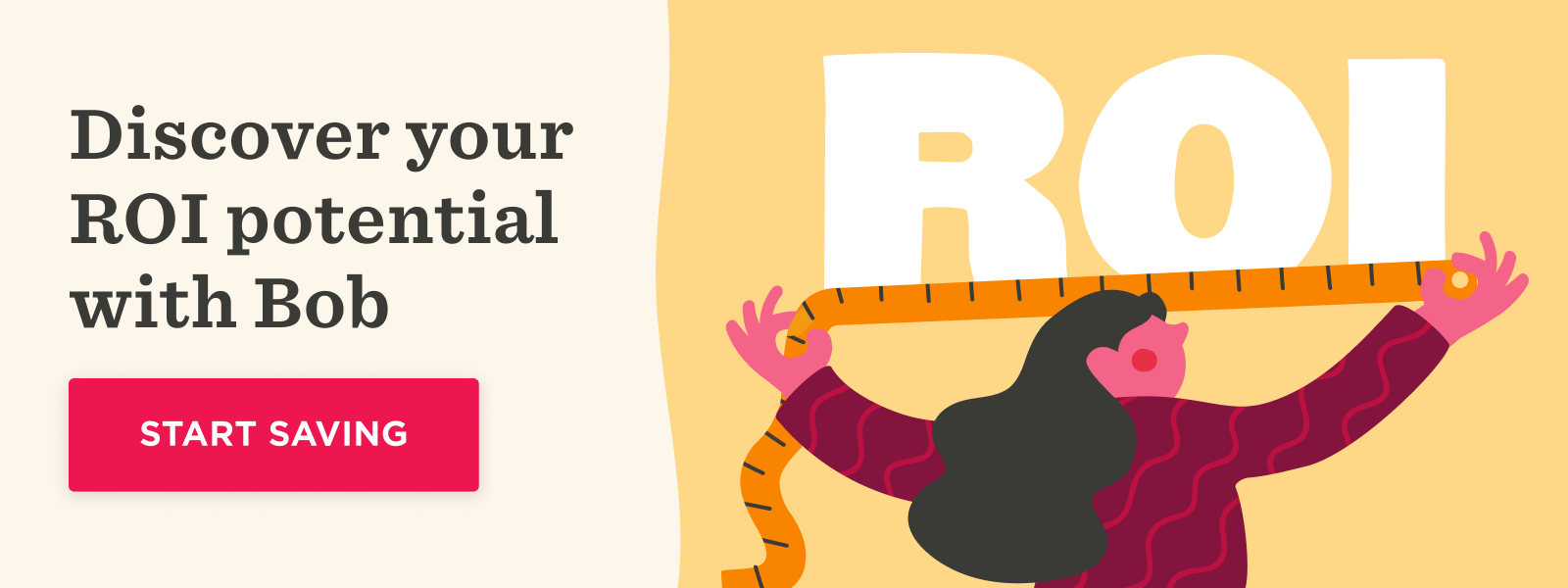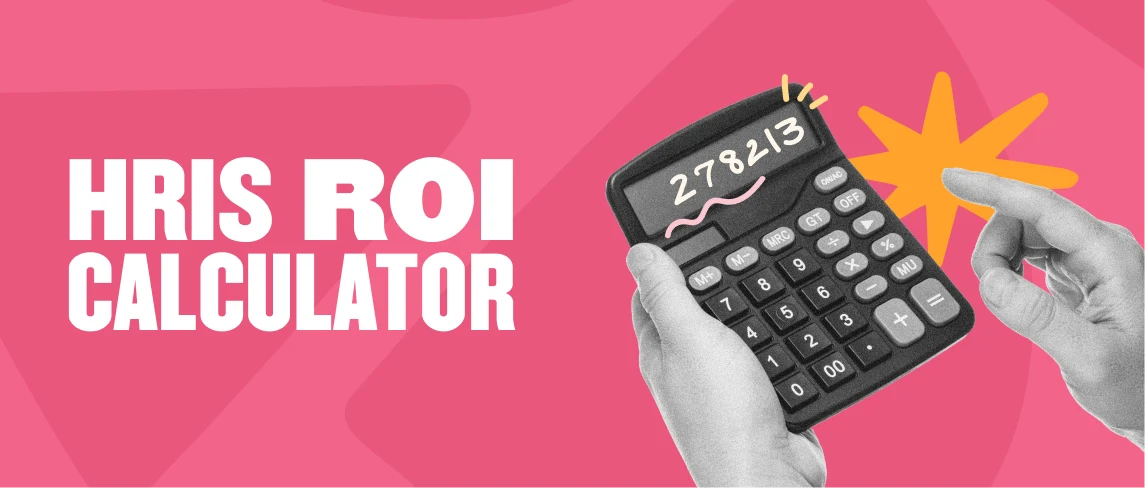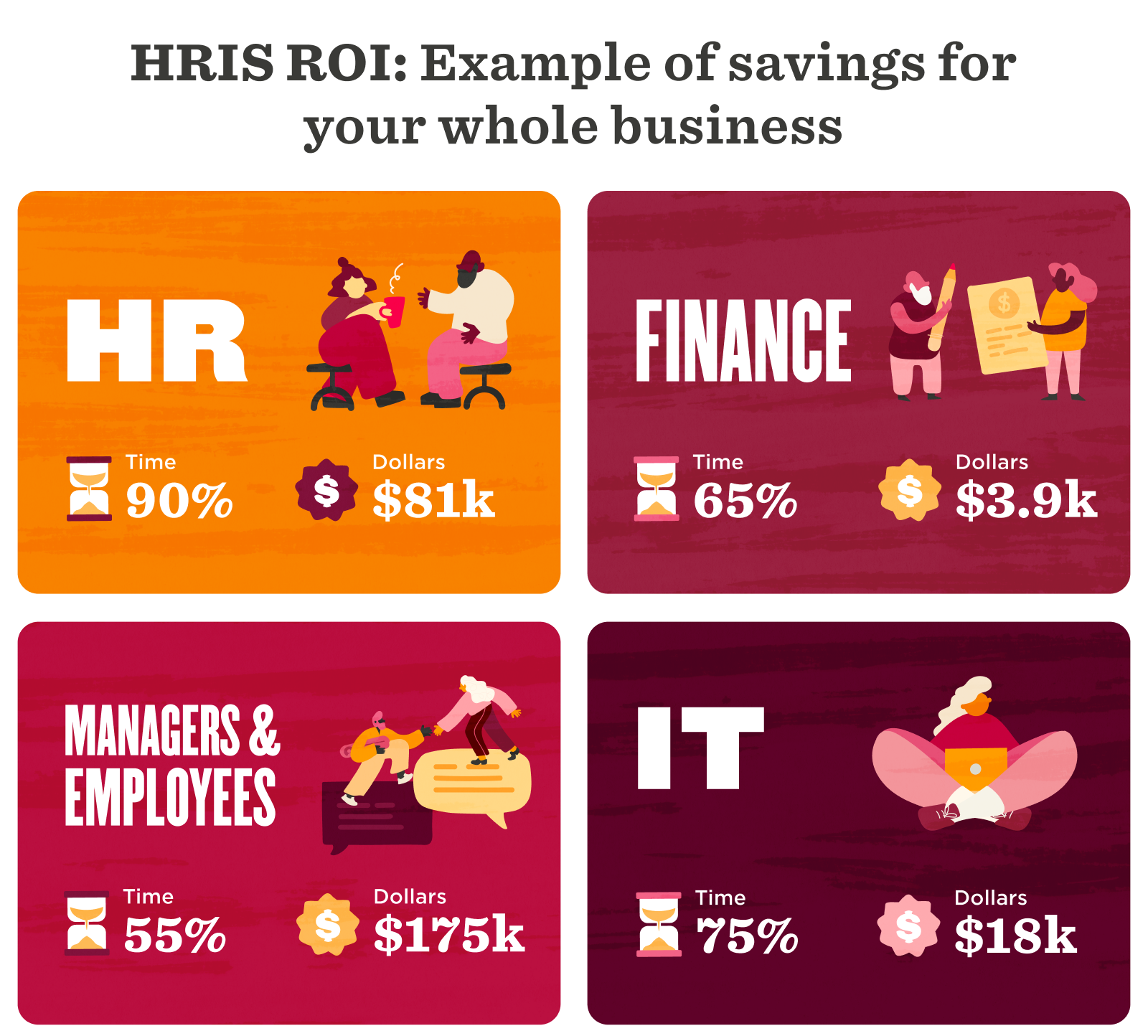As an HR professional, investing in HCM or HRIS software to save time on human resources-related tasks should be an obvious choice. After all, you’ll be able to improve your strategic decision-making with an HRIS and free up time to actually focus on important, big-picture thinking instead of menial daily tasks.
That being said, it’s not uncommon for senior decision-makers to hesitate when it comes to investing in HR technology, viewing it as more of a bonus than a necessity. You may wonder how much time and money it takes to do administrative tasks manually and how much you’d actually save by introducing an HRIS.
When you actually do the math, you’ll probably find that the numbers concretely demonstrate that an HR platform is totally worth it. This HRIS ROI calculator will show you how to determine the real dollar impact of an HRIS on your organization’s bottom line.

How to create an HRIS ROI calculator
ROI is a simple formula: net gain divided by total cost multiplied by 100. To make this calculation, you’ll have to find a few figures:
- How much your desired HRIS will cost
- How much money your HRIS will save you
The first figure is relatively simple to find. It involves the following:
- Annual cost of the HRIS, including subscription fees, customer support, and data storage
- Set-up costs, including the time it will take you to configure the HRIS, import data, and train your team on it
- Ongoing expenses, such as any maintenance time
The exact numbers will vary depending on the HCM or HRIS you choose. But, take the following example: A 2022 Software Path survey determined that the average HRIS budget is $210 per month per user. Users are people with full access to the HR platform such as HR administrators, payroll specialists, talent management specialists, and recruiters.
HRIS net gain
Calculating how much money your HRIS will save you is a bit trickier than figuring out how much it costs. As part of this calculation, you’ll have to consider all of the areas where your HRIS will make a financial impact. These can include:
- Any money saved by replacing ineffective processes with more functional ones
- Increased productivity, such as people being able to be productive sooner due to smoother employee onboarding processes
- Reduced employee turnover
How an HRIS saves HR teams time
One of the most important areas to look at is the different ways in which your HRIS saves you time. This will probably be where most of your net gain comes from. There are a number of tasks that an HRIS can automate or speed up for your company. Among these are recruiting, compensation management, KPI tracking, time tracking, data entry, payroll, and so on.
To help you figure out how many hours you’ll save doing each task, you’ll need to track approximately how much time your team currently dedicates to them. Then, you can estimate the time it will take to do the same tasks with an HRIS.
Overall, HR teams see 30 to 60 percent time savings on administrative tasks when implementing an HRIS platform.
Recommended For Further Reading
How to use HiBob’s HRIS ROI calculator
To fully demonstrate how you can calculate the ROI of your HRIS, let’s look at a simple example using HiBob’s ROI calculator.

Let’s say your company has 12 HR team members whose average annual salary is $60,000. They each spend five hours of their 40-hour work week on manual admin tasks like employee data management, onboarding, workforce planning, and performance reviews.
When we calculate the amount of time your team spends on admin per year, we see it comes out to $90,000.
$60,000 (avg salary) x 12 (employees) x 5hrs/40hrs = $90,000
But with an HRIS or HCM like Bob, your HR team is able to automate tasks and cut admin time down to just 30 minutes a week each.
$60,000 (avg salary) x 12 (employees) x 0.5hrs/40hrs = $9,000
$90,000 – $9,000 = $81,000
Incredible, right? Your HR platform saves your business $81,000 per year. It frees up 90 percent of the time your teams used to spend on admin tasks and leaves time to focus on what really matters: your people.
The real ROI of HR tech
Your HR platform saves time and provides the analytics your HR team needs to make data-driven decisions. Plus, with all the money you’ve saved, you now have more budget to allocate to exceptional people programs that drive engagement, satisfaction, and the innovation you need to boost your bottom line.
<<Discover the ROI of your HRIS with HiBob’s HRIS ROI calculator.>>



